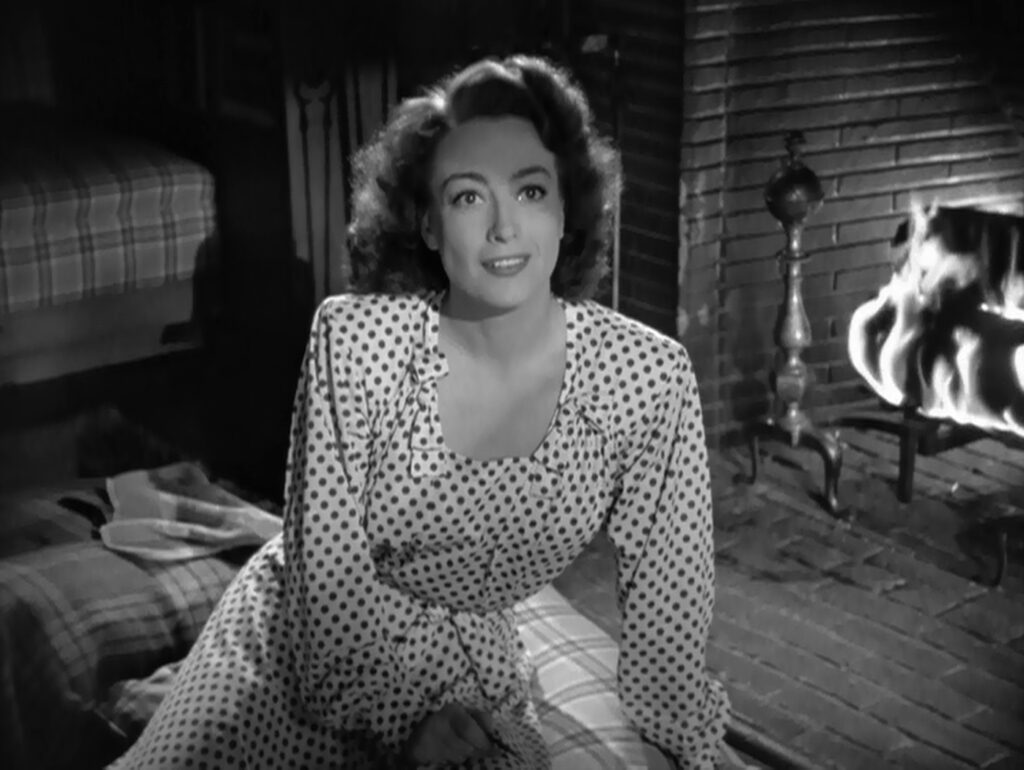
Mildred Pierce
1945, directed by Michael Curtiz
It’s hardly surprising that so many movies are set around Los Angeles, whether their plots have to do with show business or not. The life and landscapes of southern California are diverse enough to accommodate all kinds of stories. The film industry is always there, whether it’s foregrounded or hidden from sight, and there’s no need to break the “fourth wall” in every film by reminding audiences of the production apparatus behind the scenes. Sometimes, though, the unseen presence of the studios is loaded with meaning. By hiding the elephant in the room – by avoiding any obvious allusion to Hollywood – Los Angeles can become an unspoken metaphor for the entertainment industry that shapes the modern world’s dreams and values so decisively.
Few people would think that Mildred Pierce has anything directly to do with the topic of entertainment. It’s a story of crime, ambition, economic mobility, and the difficulties of parenting. If it weren’t for two small details flashed on screen for a total of seven seconds, there would be no hint of Hollywood’s proximity – but once we notice those two details, a whole new side of Mildred Pierce opens up.
The first detail is in a four-second shot of Monte Baragon bringing orchids to Mildred. Behind him, across the street from Mildred’s restaurant, is the marquee of a cinema showing Mr. Skeffington. The reference to Joan Crawford’s arch-rival Bette Davis is more than an inside joke; it also calls attention to Crawford’s exalted status as an icon of the star system. One of the top actresses of the Golden Age, she was a kind of synecdoche for Hollywood itself.
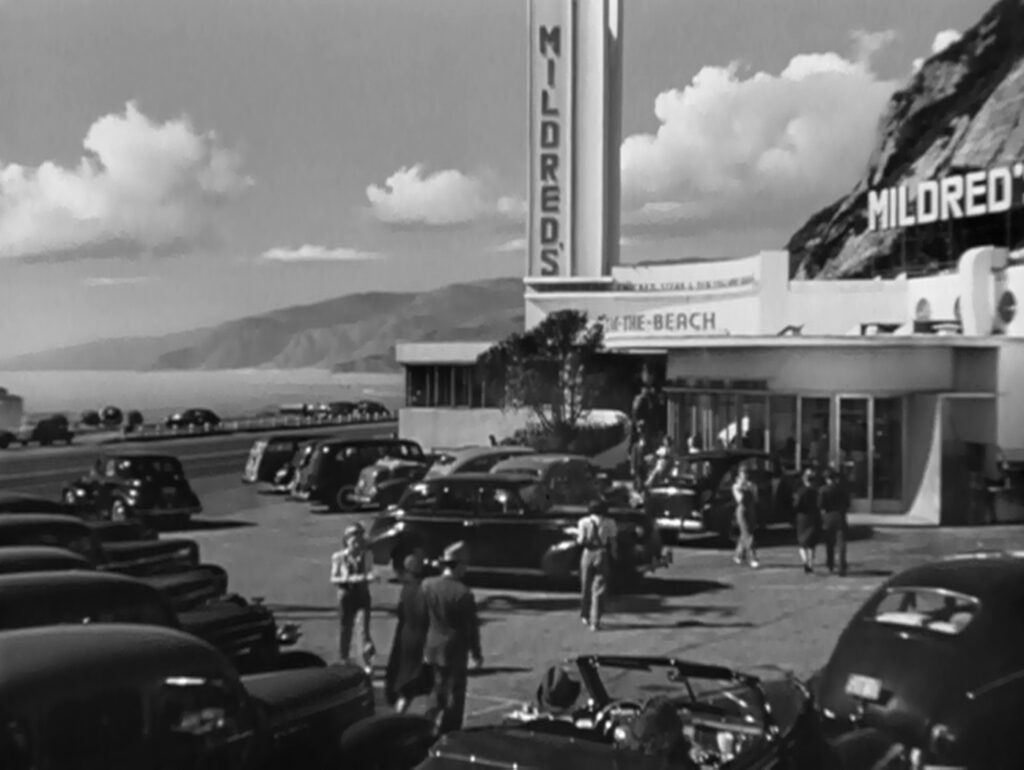
The second detail follows nine minutes later during a montage of the restaurants Mildred opens as her business booms. Behind one restaurant is a big “Mildred’s” sign mounted on a hillside. The white letters look distinctly like the famous Hollywood sign – even the font is the same. There’s also a shot of Mildred’s original restaurant with floodlights, like the 20th Century Fox logo or a movie premiere. Taken together, there’s just a hint of a suggestion that Mildred and her restaurant chain are analogous to Hollywood, which is also a profitable business “feeding” the public what it wants.
Mildred Pierce is not exactly about the business of Hollywood. That analogy would stretch it too far. Mildred is a businesswoman, but the story’s substance is in her role as a mother. It’s because of Veda that she’s driven to succeed, and it’s because of Veda that she fails. Mildred’s relationship to Veda is the movie’s center, but her younger daughter Kay is also important… not only as a foil to Veda’s aristocratic aspirations, but because Kay tempers the movie’s critique of Mildred. When Veda tells her mother, “It’s your fault I’m the way I am,” there’s some truth to it, but Kay shows that Mildred can be a good mother too. If Mildred stands, on some level, for Hollywood, then her children must be the public that she raises – the idea being that Hollywood’s influence is like a parent’s.
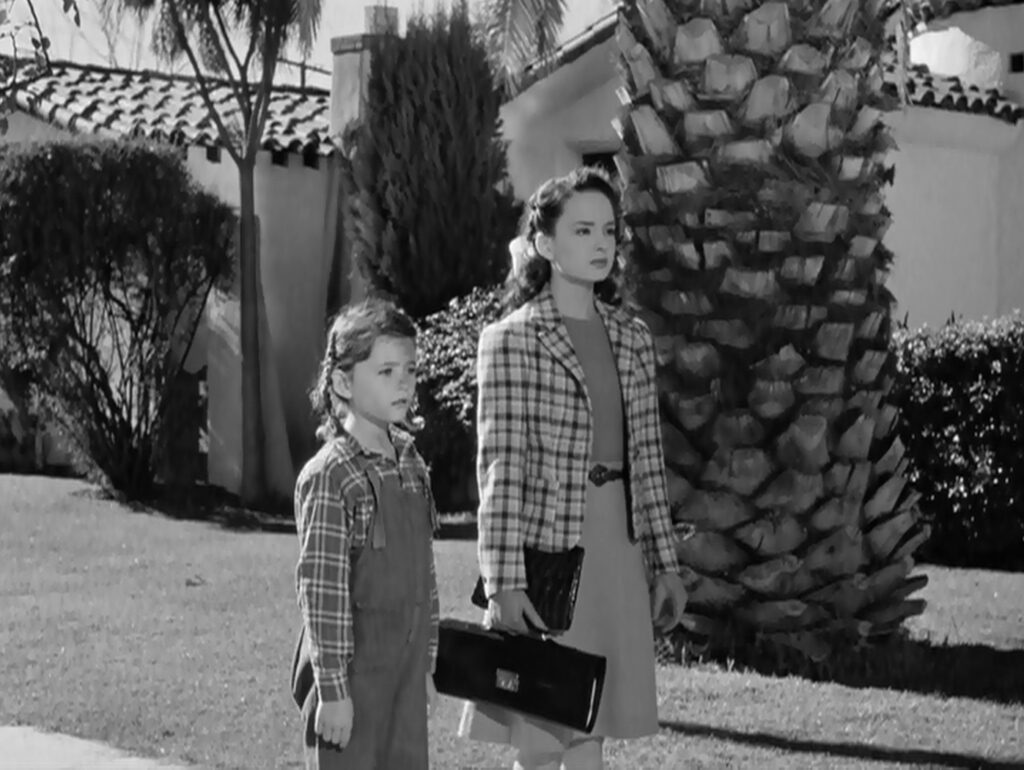
Mildred has two almost opposite daughters, just as Hollywood’s “parental” influence has always worked in two directions. On one hand, through the Depression and World War II, numerous movies like The Wizard of Oz and Shadow of a Doubt had taught the virtues of ordinariness, advocating satisfaction with one’s fair share of life. On the other hand, much of Hollywood’s output, and especially the culture of celebrity that grew out of Hollywood, encouraged a fascination with glamor, heroism, stardom, and other surplus qualities that rise “above” ordinary life.
The extent of Hollywood’s influence back then may be hard to appreciate today. Average Americans went out to the cinema far more often during the 1930s and early ’40s. Movies were relatively inexpensive, movie houses were all over the place, Hollywood’s output was enormous, and studios could afford the best writers and actors. Naturally movies shaped the public’s desires and its ideals. By embodying Hollywood’s healthy and corrupting effects respectively in the two daughters, Mildred Pierce took a nuanced view of Hollywood. Mildred remains sympathetic… but still her innocent daughter dies, whereas the monster she created survives and dominates. There’s a warning in that.
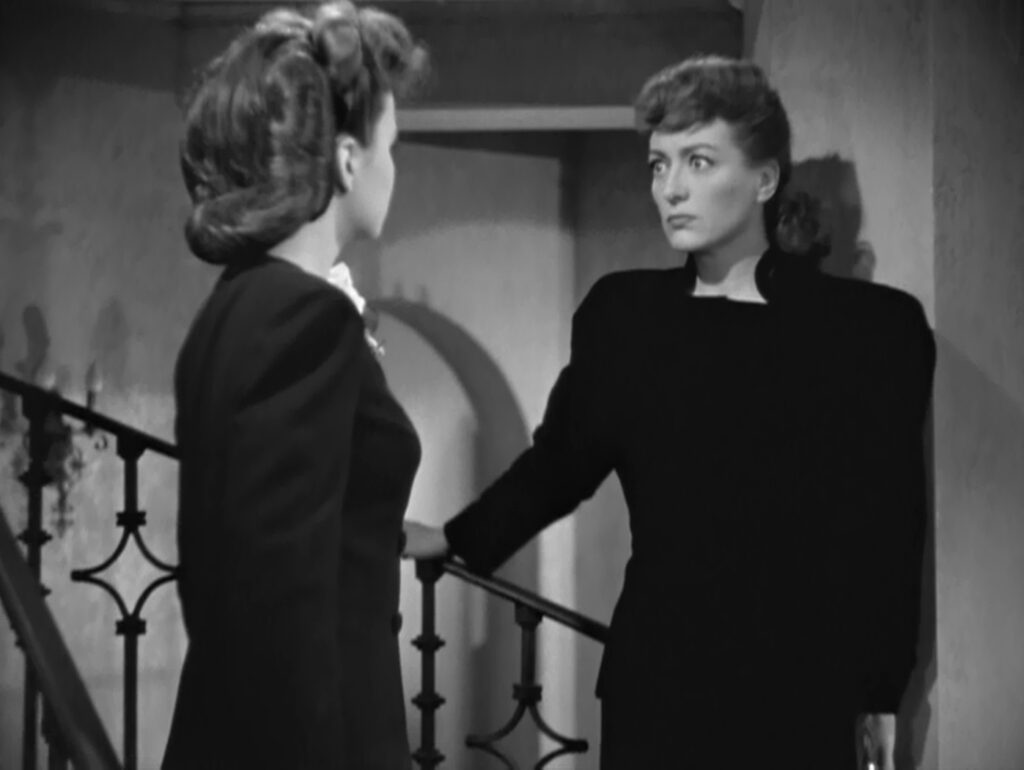
Apart from Veda’s corruption there are two less obvious elements to the equation. First is that the more Mildred feeds Veda’s insatiable desires, the further apart mother and daughter become. At first she gives Veda dresses, then social outings, then a fancy car, and finally she marries Monte so Veda can live in a mansion. As Mildred’s material generosity scales up, her daughter’s affection and gratitude diminish. There’s a parallel trend in real life, as Hollywood makes movies that increasingly indulge the public’s juvenile demands. In the 1930s, Hollywood studios recognized a responsibility to hold society together through hard economic times, and their movies were built around constructive insights that helped people navigate life. Those years were also the peak of movie attendance and of Hollywood’s influence. In subsequent decades, as studios and, later, independent producers catered to more purely commercial demands, attendance at movie theaters declined. The trend is easier to chart in retrospect, but even in 1945 there must have been signs of it as the war drew to an end.
The second less obvious thing about Veda is her incest. Her rivalry with Mildred is a sign of an increasingly pronounced Elektra complex. She’s cozy with her father Bert, and her disgust toward her mother shows early. “I love you, Mother. Really, I do… but let’s not be sticky about it.” Toward the end, when she has an affair with her stepfather and threatens to steal him from Mildred, there should be no doubt that she harbors an active case of juvenile incest.
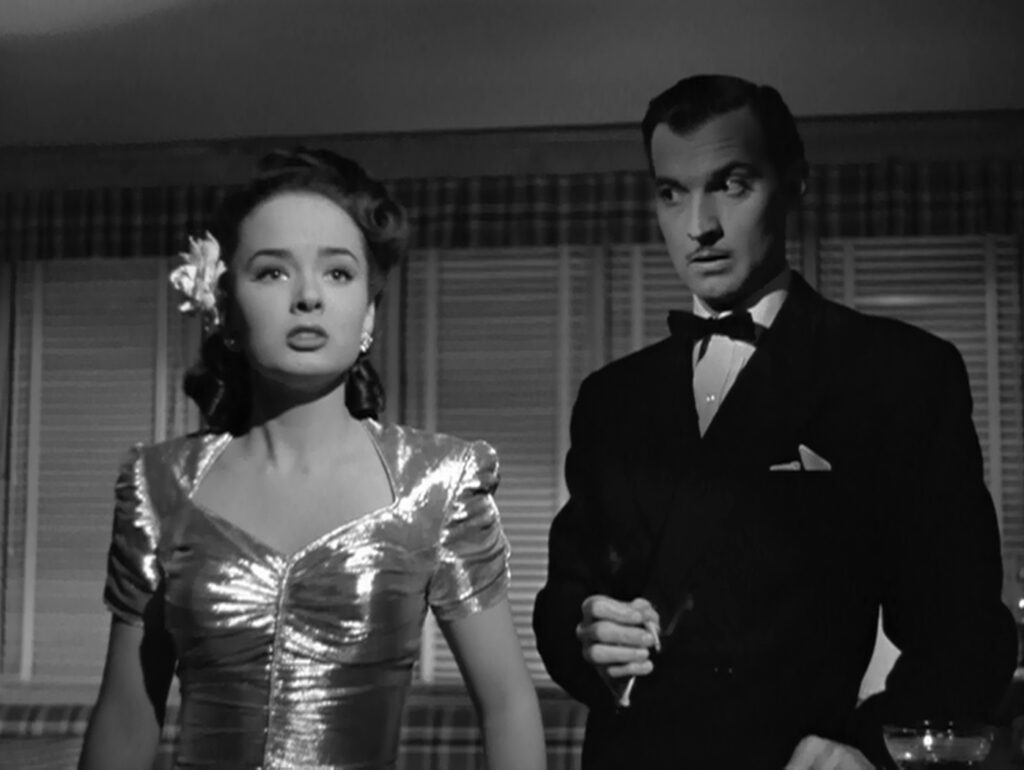
Veda is not merely avaricious. What she really wants is a kind of glamor – an exalted status that looks down on ordinary people like her waitress mother. When she can’t have luxuries anymore she’s happy working as a showgirl in Wally’s bar because the attention she gets still affords her a sense of glamor. The thing about glamor is that it’s always a surplus quality above beauty and sexual attractiveness. It’s a regressive wish that attempts to recapture a child’s ideal vision of its desired object, often the parent of the opposite sex. Many women conform to the demands of glamor merely because men want it – it reminds men of the way they looked at their mothers as small children – but Veda is not a victim. She craves a glamorous life because she still wants to be the princess she fancied herself in her father’s arms long ago.
Taken in pieces, this analysis may not sound new. The effects of spoiling a child are well known, and the dynamics of childhood incest show up in a long history of literature before Freud makes it explicit. Mildred Pierce ties the pieces together so we can see how inseparable they are. Snobbish behavior, rivalry with a parent, pursuit of glamor, and lingering infantile sexuality go hand in hand, and when the entertainment industry promotes a wish for glamor it unleashes a destructive psychological force. Over the next fifteen years Hitchcock’s films would take the topic further, exposing a social danger in Oedipal males that surpasses that of Elektral females, but what’s important in Mildred Pierce is not the sex of the villain but the dynamic that tempts the public with infantile desires and keeps society juvenile.
Looking back from a time when superheroes, video games, comic books, and toys are dominant subjects of mainstream movies, it might seem odd that Mildred Pierce predicted such a drop in maturity so early. The 1940s seem like a time of grown-up films, at least by comparison, but apparently the seeds of erosion were already there. In fact Mildred Pierce singles out one highly acclaimed film, offering a corrective to it. Like Citizen Kane it starts with a dying man’s single last word before proceeding to a long flashback that investigates what led up to that word. Both films point back to the mind of a child – Charles Foster Kane’s whole career was motivated by a simple childhood memory, and Mildred’s career was a misguided attempt to appease her daughter’s childhood demons. The difference is that Citizen Kane passes its solution off too glibly, as if we’re supposed to be content knowing that the emotion of a childhood outburst remained unchanged through the life of a famous and wealthy man. Mildred Pierce might not equal the photographic and narrative flourishes of Kane (though it doesn’t do badly) – but it represents a more adult understanding of life.
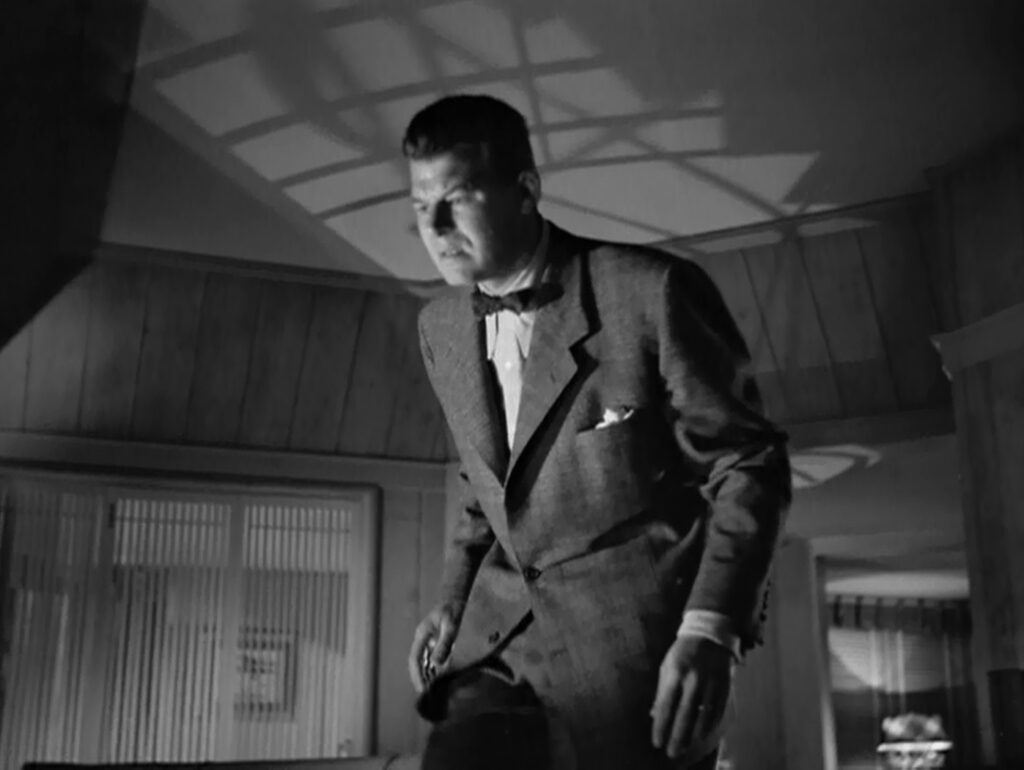
The last moments of Mildred Pierce put its story in perspective. Finally arrested for murder, Veda says, “Don’t worry about me, Mother. I’ll get by.” No matter how defeated she is, her contempt rises to the surface. Mildred walks out of the police station, Bert joins her, and together they pass a pair of washerwomen cleaning the floor. This image of honest, humble work is a silent riposte to Veda. There may not be any glamor in their work, but at least it keeps the world running.
CONNECTIONS:
Citizen Kane – Single dying word in opening scene; investigation of a character’s life in flashback
Detour – Selfishness and the allure of Hollywood in the United States immediately after WWII
Sunset Boulevard – Ambivalent picture of Hollywood during the decline of the studio system
All About Eve – Villain who cares more for glamor or stardom than for material success
Roman Holiday – Opening that echoes Citizen Kane
Vertigo – Argument about the social effects of juvenile incest carried into adulthood
Devi – Critique of glamor and hint of its roots in incest
Marnie – Cleaning women representing honest labor in contrast to a character who cheats life
Zabriskie Point – Set in Los Angeles with an implicit allusion to Hollywood’s social influence
Eraserhead – Subliminal Hollywood sign
Blade Runner – Set in Los Angeles with an implicit allusion to Hollywood’s social influence
Moon in the Gutter – Link between incest and glamor; implication of Hollywood’s guilt
L.A. Confidential – Metaphor for Hollywood in the more mundane side of Los Angeles; symbolic allusion to the Hollywood sign
Mulholland Drive – Hollywood sign and social critique of Hollywood
Matchstick Men – Set in Los Angeles with an implicit allusion to Hollywood’s social influence